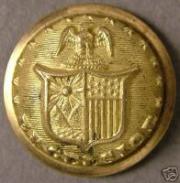CONTACT: LTC Richard Goldenberg, 518-786-4581, (cell)-518-727-7314
FOR RELEASE: Wednesday, Sep 16, 2009
A New Yorker Who Died In Battle 147 Years Ago Is Coming Home
New York National Guard, National Park Service, and VA Team Up to Return Remains of New York Civil War Soldier
SARATOGA SPRINGS, NY -- The New York National Guard, National Park Service, and Veterans Administration are teaming up to return the remains of a New Yorker found at Antietam National Battlefield in Sharpsburg, Maryland to his home state.
The remains of this unknown Soldier, who was between 19 and 21 years old when he was killed during the Civil War's single bloodiest day, will be brought to the New York State Military Museum on Wednesday, Sept. 16 and interred at Gerald B. Solomon Saratoga National Cemetery with full military honors on Thursday, Sept. 17, the 147th anniversary of the Battle of Antietam.
This will be the first unknown Soldier interred at the cemetery.
"I am proud that the New York National Guard is bringing home one of our Soldiers who gave his life to preserve the United States of America during the bloodiest years in our nation's history," said Gov. David Paterson. "Soldiers like this unknown young man fought to give our nation the "new birth of freedom" that Abraham Lincoln spoke of in his Gettysburg Address," the governor said
"It is right and fitting that today's Citizen Soldiers from New York State bring home this unknown New York volunteer of the Civil War," said Major General Joseph Taluto, the Adjutant General. "The Soldier's Creed reminds all American Soldiers that we never leave a fallen comrade behind; this is a way for Soldiers of today to care for a fallen comrade from our past."
"The majority of the men who came here and were killed did not have the opportunity to go back home," said John Howard, Superintendent of the Antietam National Battlefield and Antietam National Cemetery. "In our National Cemetery there are over 1,500 unknown graves and you do not know who these young men were, and yet you knew they came here and made this sacrifice. The idea of being able to send him home was something the entire staff stood behind. It was the right thing to do."
"I feel very honored to place this Soldier to rest here at Gerald B. H. Solomon Saratoga National Cemetery," said Daniel Cassidy, Cemetery Director. "I am pleased he was discovered and can finally come home to his birthplace. He bravely served his country and died for a noble cause; now he can rest here in this serene place among fellow patriots."
The New York Military Forces Honor Guard will transport the remains from Antietam National Cemetery, where they are currently being held, to Saratoga Springs and then provide the funeral honors.
The Soldiers remains-fragments of bone, a belt buckle, and a metal button-were discovered in an area of the Battlefield called "the Cornfield" by a hiker in October 2008. The iron uniform button's design, particular to New York State volunteer regiments, identified the remains as being those of a New Yorker.
Sixteen New York Regiments participated in the battle. Because this Soldier was wearing a coat with buttons issued to New York regiments early in the Civil War, it is likely that this Soldier volunteered shortly after the war started in April1861, Howard said. As the war went on, generic uniforms replaced state-specific items of wear.
This young Soldier was in the middle of the action when the battle began, as both armies struggled for control of David Miller's cornfield. He was deliberately buried where he fell on the battlefield, Howard said. But when other Soldiers were moved into the National Cemetery near the battlefield, he was forgotten. His grave was never found because it was adjacent to a rock outcropping, and no farmers plow ever went there, he explained.
The New York National Guard became aware of the discovery of these remains earlier this year when a newspaper story was published about the circumstances, said Mr. Don Roy, the director of the New York Military Force Honor Guard. He and New York State Military Museum Director Michael Aikey decided that this Soldier's remains should be brought home to New York, and they began reaching out to the National Park Service and Saratoga National Cemetery, which is administered by the Department of Veterans Affairs, and making plans to honor this Soldier.
Mr. Roy will retrieve the remains from Antietam National Cemetery on Sept. 15, placing them in a Civil War era replica coffin donated by Parker Brothers Funeral Home, of Watervliet. The remains will be transported to the New York National Guard' s Camp Smith Training Site outside Peekskill on Sept. 15 and remain overnight.
On Sept. 16 Mr. Roy will transport the remains to the New York State Military Museum. He will be escorted by the Patriot Guard Riders Association, a motorcycle club which rides at military funerals to honor the service members. He is expected to arrive at the Military Museum at 2 p.m., where an honorable transfer of the remains will be conducted by the New York Forces Military Honor Guard and members of Civil War re-enactors group.
The remains will lie in repose at the Military Museum, guarded by the Honor Guard and Civil War re-enactors until 8 p.m. The museum will remain open later that day and members of the public are invited to visit.
At 10 a.m. on Thursday, Sept. 17, a military funeral for the Soldier will be conducted at Saratoga National Cemetery. This will be 147 years to the day that the battle he died in occurred.
The Battle of Antietam, during which 23,100 Americans were killed, captured, wounded or went missing, occurred as General Robert E. Lee's 55,000-man Army of Northern Virginia attempt to invade the North and bring the Civil War to a close. Lee's battle plan, wrapped around some cigars, was found by Union forces so the 90,000-strong Army of the Potomac, commanded by Major General George McClellan moved to head him off.
The armies collided outside Sharpsburg Maryland along Antietam Creek, which gave the battle its name in the north. In the south the battle was known as the Battle of Sharpsburg.
During the day-long battle the Union forces attacked the Confederates and though the Union Army made little headway, Robert E. Lee's losses were so heavy that he elected to withdraw. Abraham Lincoln used the victory at Antietam to justify the release of the Emancipation Proclamation, freeing the slaves in the rebellious states.
The New York Soldier's remains were discovered in an area of the battlefield, the Cornfield, because farmer D.H. Miller grew that crop, where fighting was particularly intense as the two armies contested for the advantage.
The New York Military Forces Honor Guard provides funeral honors to the family any veteran of the Armed Services who desire honors as part of the burial. The Honor Guard as offices across the state which can schedule services. Honors are provided to all Veterans with an Honorable Discharge no matter if they served during war time or peace time at no cost to the family or funeral home
The New York State Military Museum and Veterans Research Center, overseen by the New York State Division of Military and Naval Affairs and established in 2002, preserves the story of New York's military heritage in its Saratoga Springs location. The museum has a large collection of Civil War artifacts and the largest collection of Civil War battle flags in the nation.
The Gerald B.H. Solomon Saratoga National Cemetery is New York State's sixth national veteran's cemetery and the 116th in the National Cemetery Administration. More than 1.4 million veterans live in New York and more than 225,000 reside in the Albany/Saratoga area. The first phase of construction, encompassing 60 acres of the 351-acre cemetery, included 5,000 gravesites, 2,000 lawn crypts, 1,500 columbaria niches and 700 garden niches for cremated remains. At full capacity, Solomon-Saratoga can provide burial space for 175,500 veterans and eligible dependents.
Photo Cutline:
A New York State uniform button like those found on the remains of an unknown Soldier discovered in the Antietam Battlefield in 2008.
Photo courtesy New York State Military Museum
© NYS DMNA Press Release:A New Yorker Who Died In Battle 147 Years Ago Is Coming HomeURL: https://dmna.ny.gov/pressroom/?id=1252005484
3.15.219.217
Page Last Modified: Sep 16, 2009
 Office of Public Affairs - 330 Old Niskayuna Road, Latham, NY 12110
Office of Public Affairs - 330 Old Niskayuna Road, Latham, NY 12110
